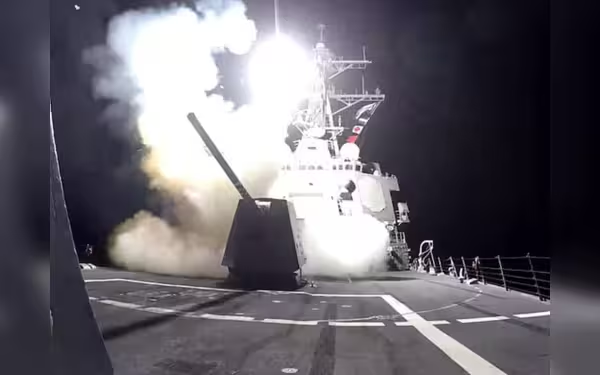Saturday, November 16, 2024 07:29 PM
US Deploys Warships and Aircraft in Red Sea Amid Houthi Attacks
- US military assets deployed in Red Sea for navigation safety.
- Houthi attacks on vessels have surged to around 100 since November.
- Escalation raises concerns over civilian safety and regional stability.
 Image Credits: tribune.com.pk
Image Credits: tribune.com.pkThe US has deployed warships and aircraft in the Red Sea to protect navigation amid increased Houthi attacks on vessels.
The ongoing tensions in the Middle East have taken a new turn as the United States has deployed warships and aircraft in the Red Sea. This move comes in response to a series of increased attacks by the Houthi movement, a group based in Yemen, which has been targeting vessels in the region. Since November, the Houthis have reportedly attacked around 100 ships, raising alarms about the safety of navigation in these crucial waters.
The US government has stated that these military actions are aimed at "protecting freedom of navigation" in the Red Sea. This phrase is significant as it underscores the importance of safe passage for international shipping routes, which are vital for global trade. The Houthis, on the other hand, claim that their attacks are retaliatory measures against what they describe as Israel's military invasion in Gaza. This complex situation highlights the interconnectedness of regional conflicts and how they can spill over into international waters.
As the situation unfolds, it is essential to understand the broader implications of these military actions. The presence of US warships and aircraft in the Red Sea not only aims to deter further Houthi attacks but also serves as a reminder of the United States' commitment to maintaining stability in the region. However, this escalation raises questions about the potential for increased conflict and the impact on innocent civilians caught in the crossfire.
The deployment of US military assets in the Red Sea is a significant development in the ongoing struggle for control and security in the region. As nations navigate these turbulent waters, it is crucial for all parties involved to seek peaceful resolutions to their conflicts. The safety of international shipping and the well-being of civilians should remain a priority, as the world watches closely to see how this situation evolves.













